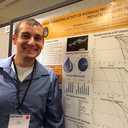Author Interviews, Duke, Endocrinology, Environmental Risks, Thyroid Disease, Weight Research / 27.03.2019
Chemicals in Household Dust May Promote Fat-Cell Development
MedicalResearch.com Interview with:
Christopher D. Kassotis, Ph.D.
NRSA Postdoctoral Research Scholar
Stapleton Lab
Duke University
Nicholas School of the Environment
Durham, NC 27708
MedicalResearch.com: What is the background for this study? What are the main findings?
- So this was something that Heather Stapleton had been curious about for years, as she's been one of several researchers characterizing the hundreds of chemicals that have been measured in indoor house dust. Before I came to Duke, one of her PhD students had measured the ability of many common indoor contaminants to activate the peroxisome proliferator activated receptor gamma (PPARg). The majority of these chemicals did, often quite well, which led to them testing indoor house dust extracts, also finding that the majority of dust extracts were also able to do so at very low levels. As PPARg is often considered the master regulator of fat cell development, the next obvious question was whether these common contaminants (and house dust) could promote fat cell development in cell models. My first work at Duke evaluated a suite of common indoor contaminants, finding that many of these chemicals could promote fat cell development, and that low levels of house dust extracts did as well.
- We next explored this more systematically in a group of adults involved in a thyroid cancer cohort (this was just recently published in Science of the Total Environment: https://www.sciencedirect.com/science/article/pii/S0048969719307715?dgcid=author
- In this study we evaluated the extent to which house dust extracts could promote fat cell development in a common cell model, and associated this with the metabolic health of adults living in these homes. We found that the greater extent of fat cell development was associated with significantly greater thyroid stimulating hormone concentrations (control residents only, with no evidence of thyroid dysfunction) and lower free triiodothyronine (T3) and thyroxine (T4). We further found a significant and positive association between extent of fat cell development and the body mass index (BMI) of all adults in the study. So this suggested that the indoor environment might play a role in the BMI and metabolic health of residents, and we next wondered if this would be more pronounced in children, who may be exposed to these contaminants during a critical window of development.
- The next step, for our current work, was to substantiate these effects in a larger group of households, each with children.
- Our major conclusions thus far have been that ~80% of house dust extracts promote significant fat cell development in a cell model - either via development from precursor cells into mature fat cells, measured via accumulation of lipids into the cells, or via the proliferation of those precursor fat cells. We also reported positive correlations of fat cell development with the concentrations of 70 different contaminants in the dust from these homes, suggesting that mixtures of contaminants are likely all acting weakly to produce these effects in combination. We’ve also begun to assess the other chemicals present in dust - chemistry can be either targeted (measuring concentrations of specific known chemicals in a sample), or non-targeted, where you try and determine the identity of the other chemicals in a sample. This has greater utility for identifying many more chemicals, though you will often not get chemical concentrations from this, nor absolute confirmed identification - just varying degrees of certainty based on evidence. Thus far we report approximately 35,000 chemicals in house dust samples across this study, and differential analyses have begun to pick out the few (less than 10 in each case) chemicals most differentially expressed between samples that exhibit high degrees of fat cell development in the lab vs inactive samples, for example, or which are differentially present in the homes of children categorized as obese or overweight. We are now working to confirm identity of these select contaminants that are more likely to be causative factors in the results we have observed.

